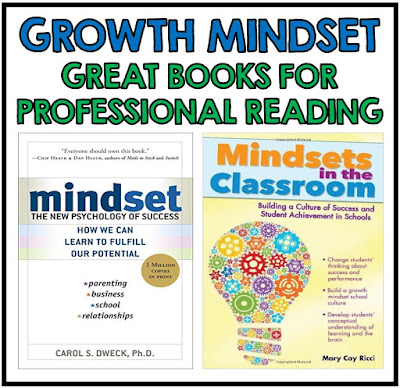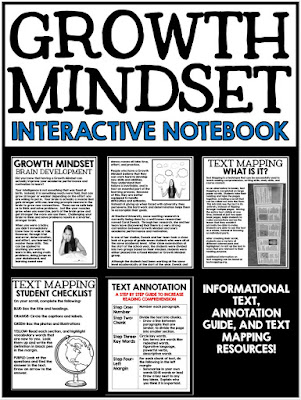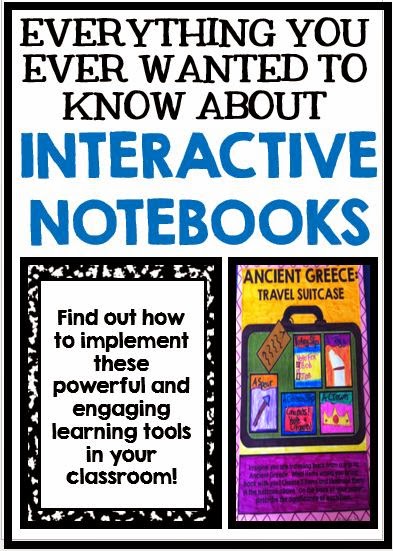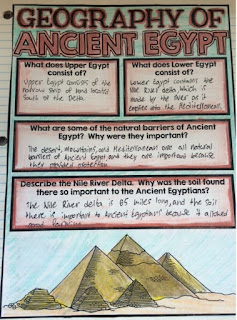As teachers, we all know the correlation between the amount of time that kids spend reading and their reading levels; quite simply, the more kids read, the better they will be at it. Studies consistently show the key role that reading volume plays in the development of comprehension, vocabulary, general knowledge, and cognitive structures. In Reading in the Wild, Donalyn Miller states that "we cannot overlook one truth: no matter what standards we implement or reading tests we administer, children who read most will always outperform those who don't read much". Even though we know this to be true, I have found that many teachers struggle with fitting in independent reading time in their classes. With standards to meet and tests to prepare for, independent reading is often something that falls to the wayside... and this is so sad!
Why should independent silent reading be practiced in our classrooms?
In his book, "Building Student Literacy Through Sustained Silent Reading", Steve Gardiner states that "a significant number of research studies have examined sustained silent reading programs, evaluating their effectiveness with students from primary grades to graduate school... and most of these studies show that SSR is successful in promoting and improving student literacy". Later is the book, he goes on to state:
"Giving them time to read is clearly the most important thing I do with my students. It:
-builds vocabulary;
-connects to writing;
-develops an understanding of the qualities of good readers;
-meets needs the teacher might not know about; and
-gives students a chance to connect with reading is an unstructured situation."
Every time our students pick up a book, they are faced with new ideas, words, and sentence structures. Every minute spent reading builds upon the next, making reading easier and more enjoyable for our students.
Some of the additional pluses I have found while allowing my middle school students time for silent reading include:
-Opportunity for student choice - Most reading done is school is assigned. Independent silent reading allows students to read material they choose on their own.
-Builds reading confidence - As silent reading time is meant to be uninterrupted, they must work through trouble spots on their own, which helps them to become confident readers.
-Students actually want to read more - Reading, sharing, and talking about books in a positive way encourages students to want to try new genres, experience different authors, plow through the next book in a series, and ultimately read more!
Some tips for setting up a silent reading program in your classroom.
As you can probably tell, I am a huge advocate for silent reading in my middle school classroom. For the past 10 years, I have been having my students complete 10-15 minutes of independent reading time at the beginning of each class. I will admit that it took a lot of trial and error for me before I turned silent reading time into something I felt was both beneficial and personally meaningful to kids. Below, I have included some of my best tips and tricks for setting up a successful silent reading program for middle school learners.
1) Make the time - With all of the other things we have going on as teachers, it can be difficult to carve out an additional 10-15 minutes of class time in our already busy schedules. However, with all of the research showing how effective independent reading is in the creation of life long readers, we really do need to find a way. This reading time gives the kids the opportunity to actually apply all of the reading strategies and skills that you have been teaching them, and is crucially important. Once you have found the time in your schedule, make sure you make the time a priority. Kids need to see that this time is valuable and important, and won't learn this if you cancel it when "more important" things come up. Show the kids that their reading time is worthy of protection, and never sacrifice it.
2) Allow for choice - As most of the reading kids do in school is assigned to them, independent reading time is the perfect opportunity to let them make their own choices about what they read. Many teachers at the school I previously taught at would allow students to bring in their own books from home for this, or would give students time to sign books out from the library. In my room, however, I have my students select books from our classroom library. My classroom library is quite extensive, with a wide variety of authors, genres, lengths, and reading levels. I am an avid Young Adult literature fan, so the added bonus of having the kids choose from our class library is that I have actually read all of the novels myself. This allows me to have great discussions with the kids about what they are reading, and also helps me to make recommendations to kids who are struggling with finding the right book. Because I have read all of the books, I know that they are quality literature choices, that are highly engaging. Yes, this does mean that I require myself to read YA lit like a madwoman, seeking out the best new titles. And it means that I spend quite a bit of money on investing in quality books for my classroom. But, as this is something I really think is important, I make the time and find the money. I will discuss some tips and tricks for setting up your own classroom library, and some of my favorite book choices for middle school kids, in an upcoming post.
3) Provide time for discussion - At the end of your 10-15 minute silent reading time, allow some time for class discussion. This doesn't have to happen at the end of each silent reading time, but it is great if you can make an effort to do this a few times a week. This is a great time to bring the class together and show them what you have been reading, introduce a new author or genre, or to give a quick book talk on a few new titles you have picked up for your classroom bookshelf. You can have students share some of their favorite reads as well, or even have a guest staff member or parent come in and talk about one of their current favorites. Our school librarian is always game to come in and share some of her favorites, and I have even had our principal come in and give a quick book talk. These discussions can really motivate other students - I have found that kids will often choose their next reading choice based on recommendations by their peers, and a new book I have shared in class rarely sits on our book shelf for long. It is amazing what a little advertising can do! Allowing time to talk about books shows kids that reading isn't just a solitary activity.
4) Celebrate Reading! - Sometimes reading can get a bad rap. Kids can come into your classroom saying that they hate reading, and that it isn't something "cool". As a teacher of reading, it is your job to make reading cool again! Make reading in your classroom something to celebrate. Give book talks, hold mini conferences with your kids to talk about what they are reading, and get excited about new books in your classroom library. Your enthusiasm about reading really will rub off on them! One of my favorite ways to celebrate reading in my classroom in by throwing a "book feast" at the end of the year. Have your students choose a favorite independent reading book, and bring in a themed snack to share with the class. On the day of the feast, have the kids discuss their books and the way the snack ties in. I clearly remember a group of boys one year who were hooked on the "Hunger Games" series - they brought in "Cinna"-buns (cinnamon buns), Nightlock Berries (blueberries), and Po-"Cato"-Chips (potato chips). Such a fun way to get kids excited about what they are reading, and to share that enthusiasm with others.
5) Model, model, model! - According to Gardiner, independent reading time "allows an adult to model the habits, choices, comments, and attitudes good readers develop". Kids need to see that reading isn't just something that kids are assigned to do, but something that is enjoyable to adults too. It can be very, very tempting to use this quiet classroom time to get some much needed work done, but try not to. Pick up a book, practice what you preach, and show kids you value the time as well.
6) Hold the kids accountable - I know some of you will disagree with me on this one, and it is probably the area that I most struggled with when setting up my silent reading time. I am all for reading for reading's sake, and fully agree that reading with a mandatory worksheet attached can suck the joy out of a reading experience. That being said, kids are kids, and not all of them are going to buy in right from the start. I found that without the accountability, I had some kids who would hide their phones and text behind their novels, or who would simply grab the first book they came across each day, resulting in them reading the first two pages of about 30 different books on our shelf. They were not investing their time in a novel, and therefore could not get excited about them. The way I stopped this from happening was that I created a series of Reading Comprehension Strategy Poster pages.

At the start of the week, the kids pick up a new reading comprehension strategy page from the front of my room, along with their silent reading book. Throughout the week, the kids are required to work on these during their silent reading time. Each page contains a few questions that can be applied to any novel they are reading, and which focus on specific reading comprehension strategies. They can work on these at their own speed throughout the week. The pages should really only take them 10-15 minutes to complete, so they don't take very much time away from their actual reading time, which I think is really important. When the kids are done, I have them glue them into their Reader's Notebooks. These are great to have on hand to refer back to when we talk about the different reading comprehension strategies in class, and give the kids some additional practice with these essential skills.

Then, throughout the week during our independent reading time, I call a few students up to my desk for a quick conference. I keep the conference very low key, and simply talk to them about what they are reading and have them show me their completed reading comprehension strategy pages in their Reader's Notebooks. This really helps to keep the kids accountable to what they are reading, and has made a huge difference in the success of my independent reading time. I think that engaging the kids with what they read really helps them to think about and make sense of what they are reading. If you are interested in trying out these reading strategy pages with your own class, you can check them out in my
Teachers Pay Teachers store by clicking here or on one of the images I have included.
7) Allow kids to give up on a book - When we read as adults, we will often stop reading when a book doesn't interest or engage us. Let kids have the right to do this too! As I mentioned above, I really don't like to see a kid picking up a new novel each day only to read two pages, but if a kid has honestly given a book a try, and has not found it enjoyable, they should be free to pick something else. Independent reading time is supposed to be fun, and kids should be thoroughly enjoying what they choose to read. Having a large classroom library, and the ability to recommend the right book to the right student, greatly reduces the amount of books kids give up on.
8) Provide Flexible Seating - Whenever possible, allow kids to sprawl out and really get comfortable with their books. Bring is comfy cushions, exercise balls, or anything else you can get your hands on to facilitate this. If it is a nice day, and your administration is on board, you can even take them outside to lay in the grass. In the past I have been known to bring in a class set of yoga mats, move the desks out of the way, and let the kids lay out on the floor. While I haven't let the kids set up blanket forts just yet, I wouldn't be opposed to the idea!
I certainly wouldn't argue about the importance of many of the things we do in our classrooms on a regular basis - in depth novel studies, writing instruction, and group work are all essential parts of the language arts classroom. Clearly, however, we can see the importance of getting books into our students hands, and for allowing them to read independently during the school day. No matter what instructional methods we choose to use, our students need time to actually apply the reading strategies and skills we teach if we want them to become skilled readers. To do this, our kids need time to read! Silent reading time is really just another tool in our arsenal for developing life long readers, who thoroughly enjoy the reading process.



















































